UPDATE (5th August 2011): Following the interesting debates and discussions arising from this piece, a follow up article has been written “Time to Change of view of ‘Nuclear Power’” - which was also published in the Tampa Tribune.
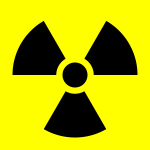 Hands up - Who thinks nuclear power is safe?
Hands up - Who thinks nuclear power is safe?
Before the Japan earthquake and tsunami on March 11, opinion surveys showed that most people thought it was. But as radiation seeps from the stricken Fukushima power plant, the world suddenly seems a very different place…
Fossil fuels are running out and we all want safe, clean and affordable power for this generation and the next. But is this an impossible dream? Today’s post describes how it is possible: It can be done with a hitherto little known type of nuclear power (yes, you read that correctly) - called the Thorium Reactor.
A ‘Thorium Reactor‘ is completely different to the Fukushima power plant design: A Thorium reactor doesn’t produce radioactive waste that lasts a thousand years, it won’t ever have a Chernobyl-like ‘melt-down’ and it can’t be used to make an atomic bomb… And here’s the Sucker Punch: We’ve known about this super-efficient green technology for over 50 years!
Thorium technology was mothballed in the 1970s for financial and political reasons - this could well be a real-life conspiracy. Had Fukushima been a Thorium reactor, things would have been very different…
The Great Nuclear Conspiracy: Why you haven’t heard of Thorium Reactors before…
A brief history of nuclear power: Back in the 1950s, atomic energy had just been born. Researchers and engineers slavishly tested dozens of different ways to yield this new found source of power: There were literally thousands of different ways tosplit an atom. But one method won out: The solid fuel Uranium Reactor.
A decision made in the early 1950s set in motion the wheels which means nearly every nuclear power plant today is based on this technology. The thing is, the solid fuel uranium reactor wasn’t the best design. Not by a long shot.
Why pick a bad design? In the early 1950s, the US Military wanted nuclear bombs. The fastest way they could do it was by building uranium reactors. That way, they would have an abundance of the raw material they wanted for bomb making - Plutonium-239; a nasty waste product of a normal uranium reactor. They also wanted a design that they could shoehorn into a nuclear powered submarine. The uranium reactor fit that bill. It really didn’t matter that uranium reactors were pretty inefficient, tended to overheat and relied on a rock that needed intensive mining and refining. They had a bigger agenda.
It was known then, and nuclear physicists know it now: There is a much better, safer and more environmentally friendly way to split an atom - the liquid fuel Thorium Reactor…
Fast Facts: What so great about a Thorium Reactor?
- It’s safe: Nuclear reactors, like the one at Fukushima need constant cooling - even if they’ve been switched off. Nuclear ‘meltdown’ happens when these cooling systems fail (like in Fukushima) and the uranium fuel core overheats. But within a thorium reactor, a ‘meltdown’ simply isn’t possible - turn the power supply off and the reaction just stops.
- It’s cheap: At the moment, thorium is being thrown away. In rare earth metal mines around the world, millions of tonnes of thorium are extracted. They don’t need it - and so these companies are literally paying someone to get rid of it!
- It’s efficient: Thorium reactors (also called LFTRs) use liquid fuel rather than solid uranium. Liquid fuel means things can mix together better, meaning thorium reactors are 200-300 times more efficient than even the best uranium reactor. Powering 1,000,000 homes for one year needs only one ton of thorium! (compared to 250 tons of uranium)
- It’s clean: Thorium ‘burns’ much more cleanly than uranium, and only produces 1% of the waste (see image below). Much of the ‘waste’ from a Thorium reactor is actually quite useful and can be re-used for powering space probes (amongst other things)!
- Reactors are easy to build: Conventional nuclear power plants take about 15 years to set up and build. A thorium reactor is a much more simple structure and operates at a much lower temperature., therefore they can be much smaller and are faster to build.
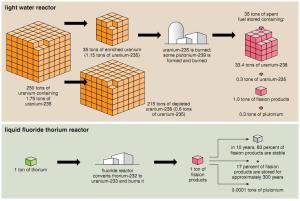
Thorium vs. Uranium Reactor. Click to enlarge (Copyright: American Scientist, reproduced with kind permission)
Is Nuclear Energy really the future?
Staring in the face of fossil fuel shortages and impending climate change, the world desperately needs to change. Before now, I have never liked the idea of nuclear power being a part of that future- radioactive waste and nuclear disasters just don’t really appeal! But thorium reactor technology seems to offer a great compromise for safer, greener energy.
Thanks to the internet, the word about alternative nuclear power is slowly getting out. Online communities such as EnergyFromThorium are also gathering momentum in the Western world. But politicians and energy companies are reluctant to invest in change. At the moment, the only country that really taking thorium technology seriously is China - and they are leading the way in researching and developing a new generation thorium power stations.
Had Fukushima, Chernobyl and Three Mile Island had thorium reactors, today’s newspapers would be telling a different story. My hope is that the ongoing tragedy in Japan can act as a catalyst for change.
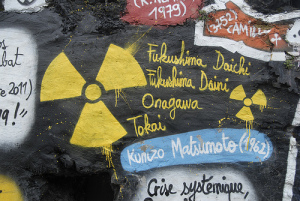
.
Thanks for reading - comments and feedback are warmly welcomed!

.
Note: This article was reprinted and featured in the April 17th edition of The Tampa Tribune. Click here to read that version.

.
With many thanks to:
American Scientist Magazine for reproduction of the Thorium vs. Uranium infographic - check out their website for up to date science news, articles and information
Find out More:
The interested reader is strongly encouraged to check out the International Atomic Energy Agency‘s comprehensive document “Thorium Fuel Cycle Potential Benefits and Challenges”
The EnergyFromThorium Community
Just how abundant is Thorium? Charles Barton tries to answer this question (site also has a very good selection of links).
Want to buy some Thorium? Compare the price between Throium and Unranium!
Wired Magazine also covered the benefits offered by Thorium reactors back in 2009
An excellent video Interview with Kirk Sorenson explaining Thorium reactor technology
Read more and watch videos at the Thorium Energy Alliance
Dr Robert Hargreeves has prepared a useful website giving more information on Thorium reactors
Find out about the health effects of radiation (BBC News)
What happened at Fukushima? Questions and Answers (BBC News)
References:
Robert Hargraves, & Ralph Moir (2010). Liquid Fluoride Thorium Reactor American Scientist, 98, 304-313

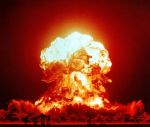






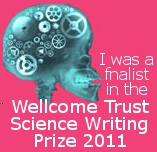


Excellent article, thanks. A thorium reactor can also incinerate waste produced from its uranium counter parts. Thermo-nuclear bombs can also be incinerated in a Thorium Nuclear Reactor. I’ve also read that desalination of sea water can also be part of a Thorium Reactors electricity power generating process.
Posted by krONik | April 4, 2011, 8:54 amHi krONik!
Great points, many thanks. 🙂
The more you look into it, the more it seems just to make sense! I gets me angry that there seems to be so little political interest to make a change…
Posted by Stuart Farrimond | April 4, 2011, 1:05 pmI’m a retired scientist. (power generation industry)
In Feb. 2011, China announced that it plans to mass-produce and export transportable Thorium LFTR reactors which will replace coal-fired boilers in existing electricity plants worldwide. This will result in a dramatic reevaluation of the whole Carbon-Price debate!
China will invest billions of dollars in this lucrative venture! They will be unstoppable. India, Russia, Japan & the USA are now rushing to compete. Most nations will soon see no need for Carbon pricing!
A good article by the Vs20 group is.. “zero-carbon-electricity” at www vs2020.com
Posted by Dr. Max Waed | April 9, 2011, 3:28 amHi Dr Max!
That’s a pretty incredible prospect! I truly hope that something like this can happen and we can finally move away from relying on short-sighted ways of generating power.
Thanks so much for commenting and sharing this information!
Posted by Stuart Farrimond | April 9, 2011, 4:04 amYou cant just do without uranium. If it were at all possible, Indians would have done it during 34 years when they were denied uranium by the NSG.
A thorium fueled reactor may either need fissile feed from time to time or, if it is a breeder, once at start. The only natural fissile matter the nature has given is Uranium235, 0.7% of natural uranium. You can, of course, produce another fissile matter Plutonium239 by irradiating uranium in a uranium fueled reactor or Uranium233 by irradiating thorium the same way. There are not many reactors working on thorium-U233 except for an experimental reactor in India. And it is not a breeder.
Posted by Jagdish | April 9, 2011, 2:22 pmYou are right, most Thorium reactors need a small amount of Uranium. The LFTR Thorium reactors only need an initial seed of Uranium at startup. They never need any more after that. From then on they only burn Thorium. After 50 years, the initial small percentage of Uranium is still present (bred) in the molten salt.
The uranium required for a “world supply” of LFTR reactors is insignificant compared to the worlds current consumption.
India has been working on Thorium reactors for decades. They currently have over 500 on the drawing board.
Most nations don’t publish their work on LFTR reactors because many of the patents on LFTR design expired 30 years ago - and anything they do reveal will be simply “photocopied” by China.
Posted by Dr. Max Ward | April 9, 2011, 3:34 pmJagdish, the thorium reaction can be driven by the one of these. http://www.emc2fusion.org/
No fissile material required whatsoever. (Although it would definitely be easier).
Posted by Jeremy Williams | January 8, 2012, 4:02 amHot Dry Rock Geothermal is the true “clean” new unlimited power source that massive investment is needed in.
No nukes, period.
They are unnecessary, poisonous, and so far a crime against humanity. Ask the children of Belarus.
Posted by Joe Giambrone | April 9, 2011, 6:25 pmElectricity from “Hot Rock” is not available near most of the worlds major cities and therefore requires a massive national grid. Current planning is to get away from our dangerous dependence on a ‘national grid’. We don’t want an ice storm blacking-out 50 million people!
Another serious problem with a national grid is that it cannot possibly handle the power requirements of future electric vehicles. Within 15 years, 50% of the vehicles in New York will be electric - that awesome amount of electricity has to be generated ‘in-state’.
Posted by Dr. Max Ward | April 9, 2011, 11:24 pmInteresting stuff! Thanks for all the comments - It’s great to have people with knowledge, expertise and opinion contributing 🙂
Posted by Stuart Farrimond | April 10, 2011, 5:18 pmNo nukes, no coal, no natural gas, no hydro. What’s left? Oh! I know, solar and wind vanes.
Posted by jesus bortoni | February 9, 2012, 4:56 pmWhy bother with expensive and dangerous Nuclear, when you can have baseload power provided by just water. An average toilet flush amount of water will power your average house. Does away maintaining poles are wires. No carbon. Just water in and water vapour out.
Posted by Ian | April 12, 2011, 11:51 amDo you mean the deuterium contained in that toilet flush of water?
If not, I would say that you have your head engaged fully in that same receptacle you mentioned.
Posted by Jeremy Williams | January 8, 2012, 4:05 amA most elegant response toward some rather dubious science (a la pseudo-science)!
Posted by Stuart Farrimond | January 8, 2012, 10:46 amSorry missed including the link for the above http://www.craftholdings.com.au
Posted by Ian | April 12, 2011, 11:52 amHi Ian,
Thanks for your comment! Your thoughts are much appreciated.
The method you suggest involves splitting water by electrolysis into hydrogen gas and oxygen. The hydrogen presumably can then be stored and burnt as required (e.g. In hydrogen fuel cells).
Does the problem not still remain that energy needs to be required to perform the electrolysis in the first place?! And if the hydrogen is then to be burnt for electricity, is this not just reducing the efficiency of the energy generating system (be it from tidal, solar, etc)?
Thoughts?
Dr Stu
Posted by Stuart Farrimond | April 12, 2011, 10:31 pmThis article is deceptive and factually incorrect at many levels.
In the Fukishima disaster, the nuclear reaction was stopped within minutes of the earthquake, well before the tsunami hit. The overheating was caused by short-lived fission products, which would cause the same problems in a thorium reactor. Similarly, most of the environmental contaminants (Cs, I) are fission products which are produced by both reactor types.
Also, most thorium reactor designs being worked on are not molten salt reactors, because molten salt is very corrosive and dangerous.
As for thorium availability, see here for the geology:
http://lablemminglounge.blogspot.com/2008/05/thorium-uranium-ratios-and-atomic-power.html
Posted by Lab Lemming | June 4, 2011, 6:57 amHi Lab Lemming!
Thanks for commenting – there is no intention to be deceptive or be incorrect in the details.
I am no expert in this field, but an interested punter fascinated by this. Since writing this piece, I’ve been in contact with a few experts in the field as I’m trying to find out more.
I’m more than happy to correct anything I have written, but have a few questions:
- My understanding is that Fukushima could have been prevented, and had it been an LFTR we would not have the same problems:
“If it a [LFTR] begins to overheat, a little plug melts and the salts drain into a pan. There is no need for computers, or the sort of electrical pumps that were crippled by the tsunami. The reactor saves itself” Kirk Sorensen (see: http://www.telegraph.co.uk/finance/comment/ambroseevans_pritchard/8393984/Safe-nuclear-does-exist-and-China-is-leading-the-way-with-thorium.html) and the link to Kirk’s site above.
- Thorium reactors do produce radioactive waste, but of an order of magnitude many times less (see graphic above – first printed in American Scientist)
- Aren’t LFTRs (technically a type of ‘Molten Salt Reactor’) leading the way in thorium reactor development? I’d be interested to know your comments on this Google TechTalks video: http://www.youtube.com/watch?v=8F0tUDJ35So
- In terms of abundance, I read your article with interest. Are you saying then that the claims of the likes of: http://thoriumenergyalliance.com/ThoriumSite/portal.html wrong?
Thanks again! 🙂
Posted by Stuart Farrimond | June 4, 2011, 8:25 amThe thorium site claims are technically correct but grossly misleading. The entire Earth has a Th/U ratio of 4. However, the vast majority of both elements occur as trace components of normal rocks (chiefly granite) and are not economically recoverable.
Foolproof safety features for theoretical reactors are great for theoretical safety. It is obviously very difficult to predict what happens when a molten salt reactor gets hit by a tsunami. more later.
Posted by Lab Lemming | June 5, 2011, 1:43 amThanks again Lab Lemming,
I have included extra links both within and at the end of the article I have absolutely no intention to be ‘deceptive and misleading’ to the reader.
The IAEA’s published report (link above) sates:
“Thorium is 3 to 4 times more abundant than uranium, widely distributed in nature as an easily exploitable resource in many countries and has not been exploited commercially so far”
I understand that Thorium (unlike Uranium) doesn’t require isotope separation (see: http://www.nucleartownhall.com/blog/debate-of-the-week-is-thorium-a-viable-option-for-the-future/ )
I haven’t found much in the way of arguments against Thorium reactor technology - do you disagree with the idea in principle or do you feel it’s potential benefits have been exaggerated?
Posted by Stuart Farrimond | June 5, 2011, 8:17 amNo worries Stuart. This is just a bit of a hot button issue for me because it attracts a number of fervent followers while glossing over the problems.
A good overview of the problems can be found in the official National Academies report on the experimental reactor, whose cleanup has become a challenge:
http://www.nap.edu/openbook.php?isbn=0309056845
While thorium does not require isotope separation, it does need to be bred (transmuted via neutron adsorption) into 233U, which is the actual fuel used (232Th is not fissile).
Molten salt Th reactors are not impossible, but the salts used are corrosive, toxic, radioactive, and emit deadly gases if cooled, so “inherently safe” probably isn’t the best descriptor.
World U resource is estimated to be around 35-50 million tonnes, while the world Th resource is about 2 million. Note that since Th is currently only recovered as a byproduct, the definition of resource is a bit sketchy.
Posted by Lab Lemming | June 5, 2011, 2:01 pmhot dry rock causes increased volcanic activity and earthquakes,whereas the Molten Salt Reactor uses spent radioactive fuel rods,that need to be used before they get buried everywhere,and a particularly BAD place to dump them would be in canada near the worlds fresh water supply.
Posted by michael e branum | August 7, 2011, 6:47 pmA LITTER’ATION
— James Ph. Kotsybar
It’s newly clear
that nuclear power
carries more threat
than possibilities.
It’s the cloud that cloaks the darkest hour —
a storm
stored in faulty facilities.
Let’s let alone
the lunatic notions
like a limited annihilation;
look what we’ve done to our earth and oceans:
Dumped canisters leak abomination —
permanent pollution –
danger that stays —
half-lives upwards of twenty thousand years —
a gift of garbage, spewing gamma rays —
a poor present that never disappears —
perpetrated upon our progeny
and our planet’s total biogeny.
Posted by Chaotic Exotics | December 9, 2011, 6:49 pmFive Hours In the No-Go Zone
— James Ph. Kotsybar
In forty kilometers squared
They’re killing livestock in Japan.
Atomic refugees, though scared,
return just to grab what they can
in the five hours they’re allowed
before leaving their homes for good,
look sadly at the farms they’ve plowed
and mourn their poisoned neighborhood.
Still searching for family lost
at the funeral homes each day,
they haven’t realized the cost
or the price that they still must pay.
Fukushima’s apology
means little while they sort debris.
Posted by Chaotic Exotics | December 9, 2011, 6:51 pmDr. Farrimond, Will you please consider creating a Facebook page? Myself and perhaps a few friends will try to promote it.
Posted by Cheryl Guinand | January 2, 2012, 10:12 pm